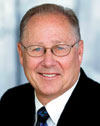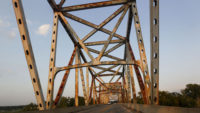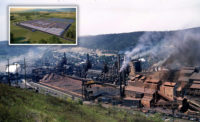
STEHLY
Richard D. Stehly was an activist in the American Concrete Institute for more than 30 years, pushing the technical boundaries and construction possibilities of the materials to the global industry. But his Sept. 18 death in Edina, Minn., apparently after suffering a fatal heart attack at a hockey game, has silenced him only six months after reaching the advocacy group’s top spot as president.
ACI says that Kenneth Hover, Cornell University professor of civil and environment engineering, and the group’s senior vice president, will succeed Stehly as president.
Stehly was also senior vice president and principal engineer of American Engineering Testing Inc., a North Saint Paul, Minn. firm he co-founded in 1989. He was a pioneering researcher and proponent of reuse of fly ash, a waste product of coal-fired power plants, as a concrete additive to improve the material’s strength and durability.
President of Farmington Hills, Mich.-based ACI since March, he testified before U.S. Environmental Protection Agency officials on proposed federal regulation of fly ash as a hazardous waste. “Our industry is going to miss one of the leaders of concrete,” says Caerhl Irey, asphalt laboratory supervisor at Braun Intertec Corp., Bloomington, Minn. “Dick made a big impact on many projects and people.”
After the Sept. 11, 2001, terrorist attack at the Pentagon in Washington, D.C, Stehly served as lead forensic engineer to assess the integrity of the massive building’s fire-damaged structural concrete. ACI officials contend his efforts helped speed the building’s reconstruction. He also provided to the media and public easy-to-understand engineering analysis after the fatal 2007 collapse of the I-35 bridge in Minneapolis. Stehly’s “depth of knowledge and clear explanations of engineering design helped the public better understand what may have contributed to this tragedy,” says David Oxley, executive director of the American Council of Engineering Cos. of Minnesota.
Stehly also was named an ACI Fellow, and served as founding chairman of its international committee and as a member of the U.S. Green Concrete Council’s editorial review panel.





Post a comment to this article
Report Abusive Comment